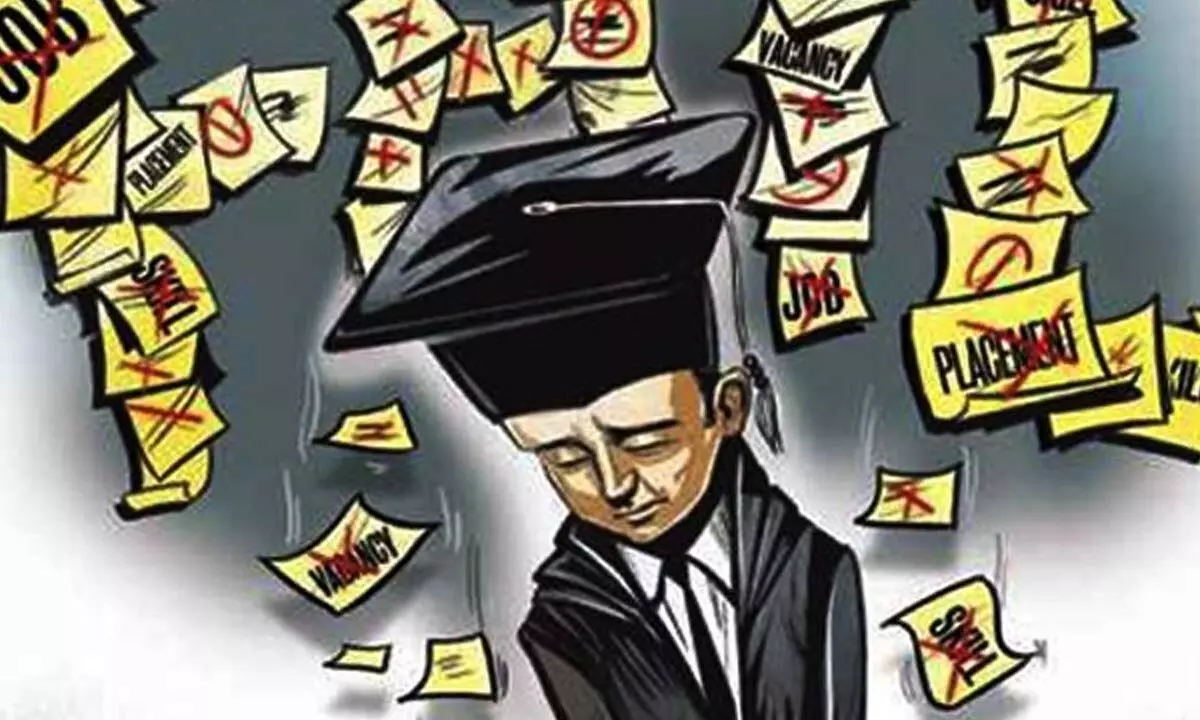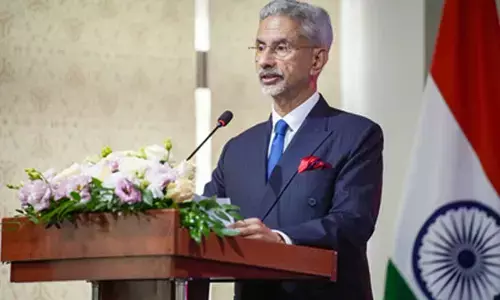Challenges on path to a developed India

The health of any complex system, whether the human body or a nation's economy, can't be determined by its size, what matters is the shape it is in
The health of any complex system, whether the human body or a nation's economy, can't be determined by its size, what matters is the shape it is in. GDP growth has become the dominant measure of the health of all economies. Gross Domestic Product is total market value of goods and services produced by a country's economy during a specified period of time, including all final goods and services.
India is going to become a developed country within a decade or so as our rising GDP trends show. But there are certain impediments that need to be addressed towards realising a developed India.
Inequality
Economist Jayan Jose Thomas said that lacklustre record of India's development strategy in the early decades after independence was not on account of the government doing too much in the area of technology building, but because the government couldn't intervene effectively to ensure social developments. Independent India didn't implement a successful programme of land reform. Ownership of assets continues to be very low among the socially backward communities, led them to disadvantages due to the lack of assets that translated into hurdles in acquiring education, and also the country underinvested in basic education for the masses. This consequently resulted in inequalities in the social spheres and better paying jobs going more to the social groups who have had greater access to higher education.
Economic growth
The persistence of inequalities has negatively impacted industrial and economic growth in India. Domestic demand has been lopsided, coming as it does largely from the upper income classes of the population. This has slowed down the growth of manufacturing of high-quality, mass consumption goods. In contrast with the East Asian countries like Japan and China, where by 1950's itself, land reforms and other measures had created a relatively egalitarian social structure, which formed the basis for progressive economic and social changes in the later years. After independence, in the early decades, India's efforts in building IIT's, IIM's, establishment of industrial production like steel, fertiliser, drug production etc., with state support was the right decision. The country should reinstate such efforts, if it has to stand a chance in fast growing economic fields.
Unaccounted ecosystem
The real economy of a nation includes its natural capital assets - all of the gifts from nature that we don't have to produce - are immensely valuable but not marketed, ecosystem services provide us with those assets. These services include climate control, water supply, storm protection, recreation etc. These natural assets have been estimated to contribute significantly more to the human well-being than all national GDP combined. But we are overlooking these contributions which has led to massive depletion of these assets.
Uneconomic growth
We are in the state of uneconomic growth. An ecological economist, Herman Daly is of the view that the country is increasing production at the expense of resources and well-being. The decline in well-being, associated with extended economic growth to arise as a result of the social and environmental sacrifices made necessary by growing encroachment on the ecosystem, is uneconomic and detrimental in long term.
Unemployment
A group of economists have mentioned that the country is facing serious problem of unemployment. Being developed is not enough, the wealth needs to be well distributed. Another economist mentioned that the organized sector is mechanized and automated and generates only few jobs. This resulted 94 percent of the labourforce is in unorganized sector, largely working at low wages. On eShram portal, 30 crore have been registered for employment in November 2023, and about 1.2 crore are new entrants for the jobs every year. The growth of organized sector at the expense of the unorganized sector results in rising unemployment.
Jobless growth
The country's GDP is increasing, but employment growth rate doesn't, it means we are having jobless growth. The employment challenge can no longer be met only through higher GDP growth, it has to be in consonance with the well-being of the whole society.
According to the First Deputy Managing Director, International Monetary Fund, Gita Gopinath, to make India the third largest economy by 2027, there is a need to create 148 million jobs by 2030, revamp higher education and improve skills of workforce. She emphasised the need to undertake land reforms, improve ease of doing business and the regulatory environment, implement labour code etc. in addition, to identifying key thrust areas and states and central governments work more diligently to implement growth- oriented policies for moving ahead on the vision of a developed nation.
According to the IMF, GDP of the US and China is in the range of thirty and twenty trillion dollars, which makes half of the world's GDP. Whereas Germany falls in the range of six and that of Japan is more than four trillion dollars. India's GDP is nearing four trillion dollars. But India is the fastest growing economy in the world having overall growth rate of 7% and will be surpassing Japan within next few years, to become the third largest economy. There is need to keep the momentum of increased growth rate so that per-capita incomes in the country reaches on par with advanced countries.
India needs to revamp industrial growth, increase manufacturing, with the state support like the US and China are ravishing government support for their industries. This will help to reduce unemployment problem to a larger extent, including increasing export and reducing import, while reducing import tariff to become player in global supply chain.
In education, especially higher education should be made accessible to all including the dispossessed. The employment opportunities need to be provided based on their qualifications.
India presently has skill mismatch in the workforce and needs a workforce which is much more skilled and has much higher level of education. There is need to take up land reform, a way forward to reduce social inequalities and to ensure women safety. One of the most important aspects the government should look into, to protect and conserve our natural assets. There is need to have space for advancement in technology but it should not be tilting the ground to favour automation, instead must develop safety nets and social security for its workforce.
To become a developed nation India needs to have economic growth, inclusive of all the important aspects which improve living standards of most of the population of the country, with a fair thought that developed nation is one which provides everyone with basic needs and the possibility of dignified life.














